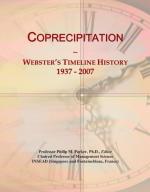|
This section contains 428 words (approx. 2 pages at 300 words per page) |

|
Inorganic contaminants, such as heavy metals, which exhibit toxicity effects when present at low levels, can be difficult to treat. The level of toxicity can be well below the metal's solubility concentration, and for this reason precipitation, a common treatment method for the removal of heavy metal, does not provide the needed effluent quality. Cadmium, for instance, has a reported maximum contaminant level (MCL) of 10 μg/l, with a 5 μg/l proposed level. Based upon theoretical solubility calculations, alkaline precipitation may only reduce the level of cadmium to 140 μg/l. Hence, additional methods of wastewater treatment are often required to meet environmental regulations. One such treatment technique is chemical coprecipitation.
Coprecipitation is a process in which a solid is precipitated from a solution containing other ions. These ions are incorporated into the solid by adsorption on the surface of the growing particles, physical entrapment in the pore spaces...
|
This section contains 428 words (approx. 2 pages at 300 words per page) |

|


